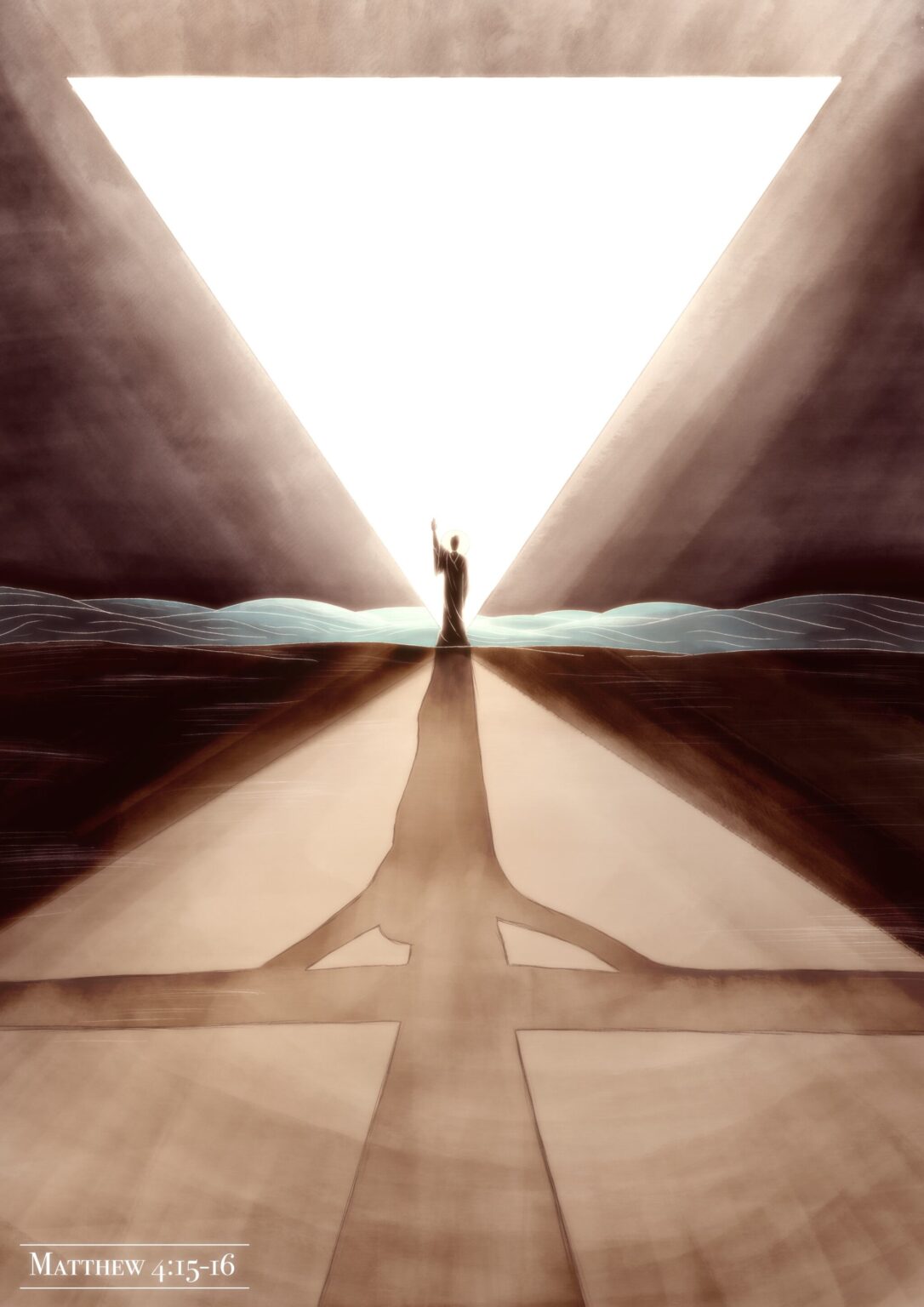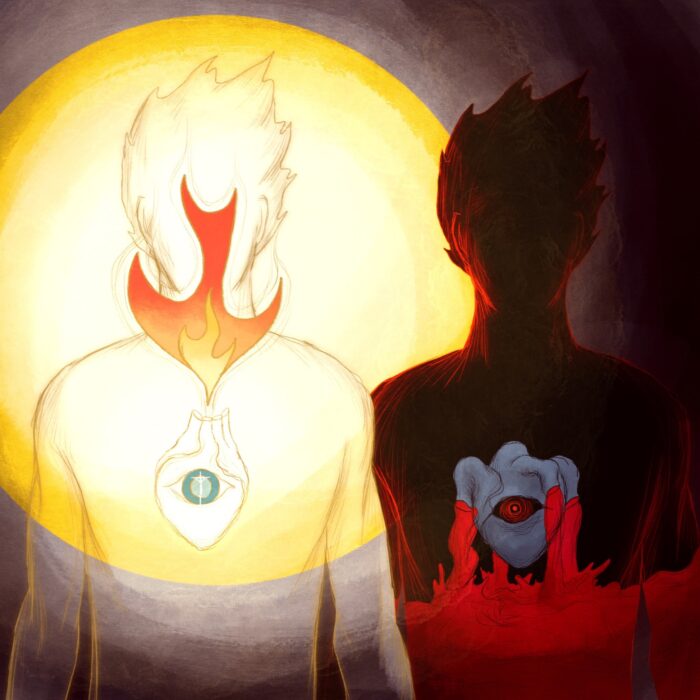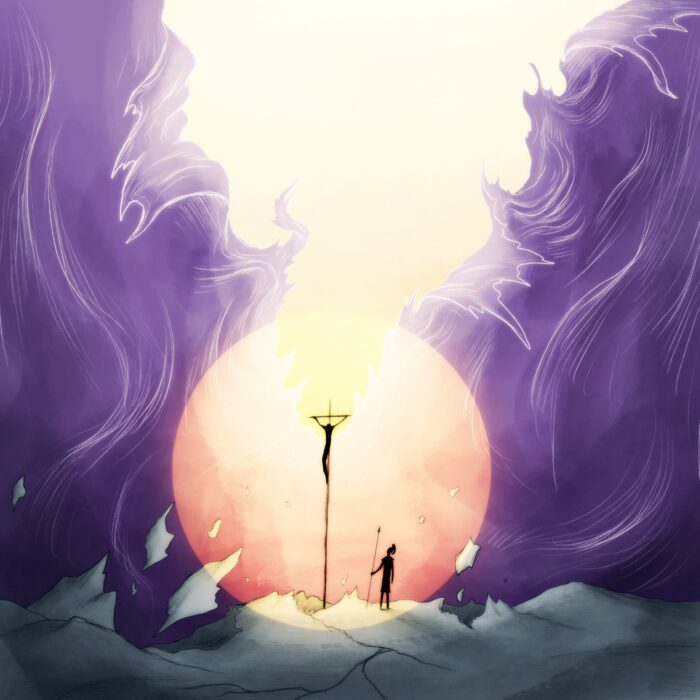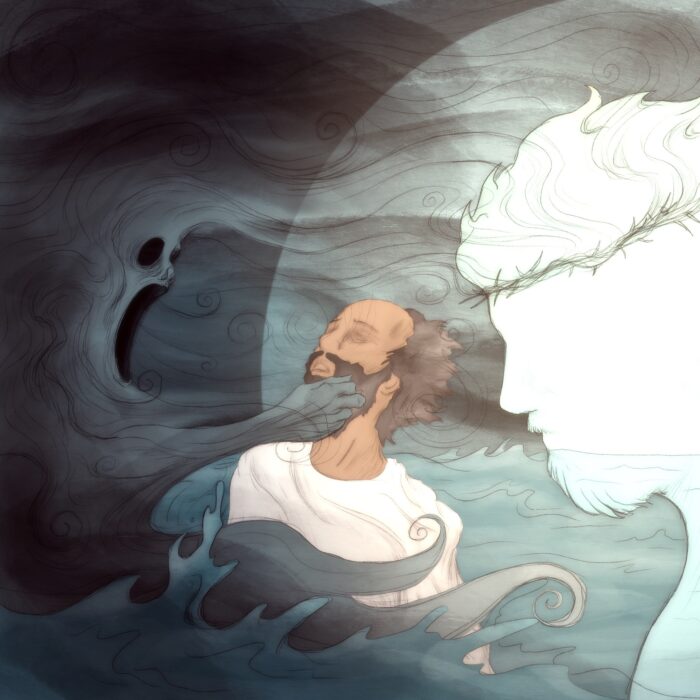
“The land of Zebulun and the land of Naphtali, the way of the sea, beyond the Jordan, Galilee of the Gentiles—
the people dwelling in darkness have seen a great light, and for those dwelling in the region and shadow of death, on them a light has dawned.”
Matthew 4:15-16
In this passage, Matthew quotes a prophecy from Isaiah 9:1-2ff in which Isaiah foretells a coming king whose name will be, “Wonderful Counselor, Mighty God, Everlasting Father, [and] Prince of Peace” (Isaiah 9:6). With this citation, Matthew—under the inspiration of the Holy Spirit—clearly teaches us that Jesus of Nazareth is in fact the long awaited Messiah, the Son of God who will bring the light of divine revelation to both Jews and Gentiles.
In the image based on this text from Matthew, the brilliant white triangle of light is the central feature. There are at least two reasons for this. First, the triangle intersecting the waters of Galilee alludes back to Matthew’s account of Christ’s baptism. In Matthew 3:13-17, we see Jesus’ ministry publicly inaugurated with a sort of “Triune manifestation” of the One True God. The Father declares His love for the Son in word, the Spirit embodies that declaration in the form of a descending dove, and the Son receives and reciprocates that love as He obediently fulfills “all righteousness.”
The second reason the triangle is so prominent is that Christ’s public ministry will—ultimately considered—be nothing less than a declaration of the Name, the Identity, the Glory of the One True Triune God. What is the “Light” that has dawned on those who dwelt in darkness? It is the light of eternal life that has ever and always been within the bosom of God (John1:4-5)—eternal life which is simply to know God (John 17:3). It is the light of the knowledge of the glory of God that is revealed in the face of the Son (Matthew 17:2; 2 Corinthians 4:6). The Light that has dawned is the climactic and definitive declaration of Who God Is which is achieved in the life, death, and resurrection of the Beloved Son.
Christ’s ministry makes the Triune God known to us. However, this does not happen by three separate revelations, or by three “phases” of revelation, the entire Triune God is manifest to us in the life and ministry of the incarnate Son. How is that? Well, to see the Son is to see the Father (John 14:9), and indeed, the Father can only be seen in/through the Son (Matthew 11:27), and perception of the Son as the one who reveals the Father to us is only possible through the illuminating work of the Holy Spirit (Matthew 16:17; John 16:14-15; 2 Corinthians 3:17-18, 4:6). Therefore, if we see in the incarnate Son the glory of the One True God, then we are perceiving the entire Trinity: the Spirit is working to reveal the Son as the image and glory of God, and in the Son’s person and work, we see and know the Father. Because of this, the only thing visible within the triangle of light (representing the Triune God), is the incarnate man, Christ Jesus. In Jesus, God the Son has become flesh so that to see this man is to see our God (again, John 14:9, also John 1:14-18).
[[Note, I do not say, that to see Christ is to see the Trinity….but to see Christ is to see God the Son, whom to see is to see God the Father, which is a perception only given by the active illumination of God the Spirit.]]
Finally, though Jesus’ hand is raised in teaching, His shadow is in the form of the crucified Christ. This is an attempt to declare that—though the entirety of Christ’s life and ministry is revelation of the glory of God—His climactic and definitive work of redemptive revelation comes when He is lifted up on the cross to give His life as a ransom for many (Matthew 20:28; John 8:28, 13:31-32, 17:1-5; 1 Corinthians 1:21-24). Just as a star shines most brightly in its death, so too the light of God’s saving self revelation blazes like a super nova in the skies over Calvary, proclaiming to both Jews and Gentiles, “Truly, this [is] the Son of God!”




